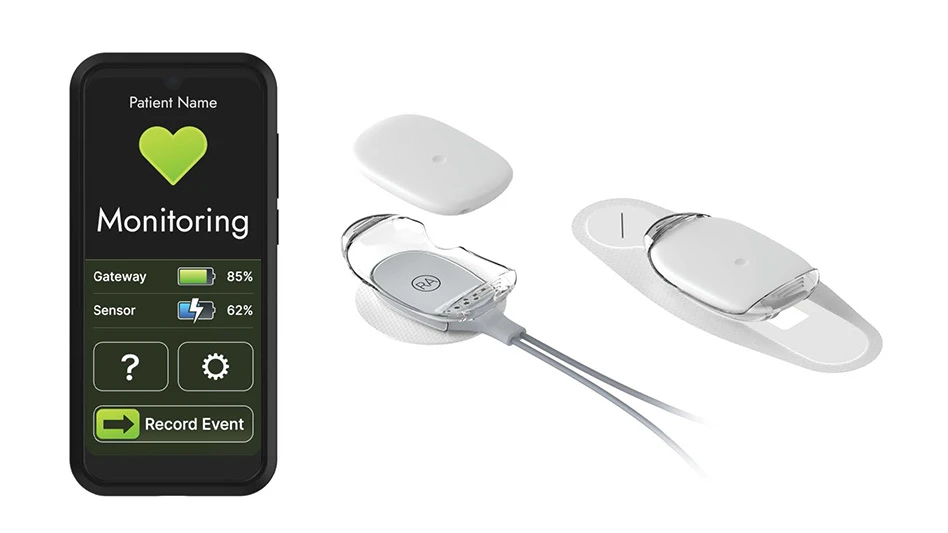 After eighteen holes of golf and a few beers on a warm April day, a massive heart attack leaves John in the hospital on the brink of death. After a few days, cardiologists find significant damage to the left side of the heart. John is hooked up to a bypass machine, kept in a medically induced coma, treated for signs of kidney failure, and a two-and-a-half month-long journey begins. Throughout the first month, his cardiologists try to cut back on medical and mechanical support to see if his heart can kick in. It takes almost another month until a reduction in medication is tolerated and he finally wakes; but his heart has not had an opportunity to rest or heal. The cardiologist decides that an left ventricular assist device (LVAD) is the only option.
After eighteen holes of golf and a few beers on a warm April day, a massive heart attack leaves John in the hospital on the brink of death. After a few days, cardiologists find significant damage to the left side of the heart. John is hooked up to a bypass machine, kept in a medically induced coma, treated for signs of kidney failure, and a two-and-a-half month-long journey begins. Throughout the first month, his cardiologists try to cut back on medical and mechanical support to see if his heart can kick in. It takes almost another month until a reduction in medication is tolerated and he finally wakes; but his heart has not had an opportunity to rest or heal. The cardiologist decides that an left ventricular assist device (LVAD) is the only option.
Two years later, John is travelling and enjoying life with his wife, children, and grandchildren, but his heart is still not healed. His LVAD is keeping him alive. However, advancements happening at a rapid pace could help millions just like him – before their heart becomes so damaged that they need an LVAD or a transplant.
Knowing there are millions of people just like John has Benjamin A. Hertzog, Ph.D., Jace Heuring, Ph.D., Will Clifton, M.D., Chris Durst, Ph.D., and the rest of the Houston-based Procyrion team working to change the way heart failure is treated, or even reversed.
Aortix is a catheter-deployed, long-term treatment option for chronic heart failure that is designed to reduce the workload of the heart – allowing it to rest and heal without surgery. Even more exciting, this device opens up the opportunity to treat younger, healthier patients before years of progressive damage occur.
None of the fast-paced development happening at Procyrion would be possible without the design and engineering minds at the company – and their embrace of rapid prototyping technologies that dramatically shorten development timelines.
Device development
Aortix, positioned downstream of the heart, uses fluid entrainment to augment native blood flow, which results in an acceleration of fluid, a net increase in cardiac output, and reduced work of the heart through afterload reduction.
 “It’s a very tiny heart pump – a small, continuous flow pump mounted within a self-expanding anchoring system which advances through a catheter in the femoral artery to the descending thoracic aorta,” explains Hertzog, president and CEO. “Then, the self-expanding anchors deploy to fix the pump to the aortic wall.”
“It’s a very tiny heart pump – a small, continuous flow pump mounted within a self-expanding anchoring system which advances through a catheter in the femoral artery to the descending thoracic aorta,” explains Hertzog, president and CEO. “Then, the self-expanding anchors deploy to fix the pump to the aortic wall.”
Following deployment, the catheter is removed, leaving only the anchored pump and a small-diameter, flexible electrical power wire that may be tunneled to a desired exit site through the skin, or to a wireless energy transfer system for implantation without an indwelling power lead.
From a design and manufacturing standpoint, Hertzog acknowledges that the team faces an array of challenges because many different technologies go into the device, which is comprised of:
- Implantable blood pump
- Strut anchoring system
- Catheter delivery system
- Electronics and control system
“The system is quite complex, but at the same time, being an early-stage startup means we have to move really fast and have quick cycle times for our different design iterations. Rapid prototyping makes even more design iterations possible due to the shortened cycle times from concept generation to testing,” Hertzog says.
The small team at Procyrion encourages collaboration and rapid idea generation, which may lead to changes to the device design. On Monday, the team might dream up a new concept and discuss it at the staff meeting. Next, they design the part in CAD and send it to a rapid prototyping vendor. By the end of the week, they receive the new part. Even though rapid prototyping has been utilized throughout the development process, they all agree they’re still astonished at the fast turnaround time.
|
Aortix in testing Aortix has been tested successfully with computer models, on the bench top in mock flow loops, and in vivo in large animal studies. In three porcine experiments conducted last year, the pump was deployed in the thoracic aorta by standard cardiac catheterization techniques and was anchored with self-expanding struts. Acute cardiac dysfunction was induced by infusing esmolol continuously. Pump support increased cardiac output 10.4%, stroke volume 8.9%, and ejection fraction 10.8% while decreasing cardiac stroke work 10.8% and afterload 22.7%. Pump support enhanced renal perfusion through sustained increases in both renal artery flow 36.4% and pressure 73.6%. |
“We utilize rapid prototyping for end product parts, as well as for fixtures and jigs. The speed of this turnaround helps us assemble our pumps and conduct bench-top testing,” says Durst, head of product development. “The advantage that rapid prototyping offers is that if we want to make three parts each of 20 different designs, we can, because the production is agnostic to the design. With conventional CNC machining the cost would be exorbitant – especially to a start-up operation such as Procyrion.”
Rapid prototyping offers the team choices based on the time and cost for them to have parts made, receive the parts, make revisions, and start with a new design within days. The team members all agree that having a physical part in hand is more conducive – and cost-effective – to advancing product development.
Clifton, director, research and development, explains that one of the most challenging parts to build is the impeller, which is the actual pumping component of the system. For instance, the team may want to test a range of different designs to verify on the benchtop what computational modeling has predicted. Before manufacturing can begin, a critical challenge is selecting which impeller will be safe and effective. Impeller specifications call for thin walls and very high precision, and having the choice of different rapid prototyping processes enables the best test part to be run through a battery of tests.
Make small, make safe
The 6mm diameter Aortix device is narrower than a pencil and is delivered via a catheter in a minimally invasive outpatient procedure lasting about 10 minutes. The incredibly thin walls and tight tolerances required to manufacture Aortix were initially challenging for the rapid prototyping providers.
“What has been interesting is to see how the rapid prototyping technology has evolved in just the past two years,” Durst comments. “With each iteration we have been able to get higher reliability of the small parts that have the super-small features. Advancements in the technology, together with the ongoing material development, have enabled us to make these impellers with high reliability.”
 This is a real game changer for a start-up company, Hertzog says, because they can get functional parts within a week for a few dollars and not thousands. Even the choice of materials from which they can get parts produced has grown rapidly in the past two years.
This is a real game changer for a start-up company, Hertzog says, because they can get functional parts within a week for a few dollars and not thousands. Even the choice of materials from which they can get parts produced has grown rapidly in the past two years.
“The old way of making these impellers for blood pumps was to send them out for 5-axis CNC machining. And if we wanted one made out of PEEK so it would be suitable for large animal testing, we would be looking at $1,500 to $2,000 with maybe an 8 to 12 week lead time,” Hertzog states. “Utilizing high-definition stereolithography (HDSLA) or regular SLA gets part cost down to $5 and done in less than a week, and we can even order printed metal parts these days.”
Another change during the past few years is the instant quoting they get from vendors. Durst notes the ability to upload a CAD file, get a quote, hit print, and have it delivered a few days later has streamlined their development process.
“Also, the ability to download CAD files of available off-the-shelf parts speeds the development of our device. We are able to spec parts, assemble it on the computer, and make sure everything is working as required – all before ordering anything,” Hertzog says. “Once it’s a go, we order it and we know it’s affordable, predictable, and what we need.”
Few of the parts going into this device are off-the-shelf components. The impeller, pump housing, some mechanical rotation components, housing for electronics and batteries, and many of the various components for the deployment and retrieval tools are produced through rapid prototyping. Parts that can’t be printed, such as the brushless DC motor, are custom ordered from a select group of vendors.
Benefits, challenges
“The longer it takes for each iteration of this product, the more money we burn through,” Durst comments. “We would not be making the progress we are without ability to employ rapid prototyping in multiple functional areas. I just keep going back to the one week where we tested 20 different pump configurations knowing we didn’t have to sacrifice any quality to save money by settling on an average design. We didn’t need stop at ‘good enough’ and move on to the next step; rather, we were able to hone in on a better design because of rapid prototyping.”
Components of Aortix
|
Clifton agrees, acknowledging that the team probably would be two years behind in their device development today, and many hundreds of thousands of dollars behind as well.
“We are big fans of rapid prototyping, but it can be a struggle for us to keep current with the latest technologies, materials, and processes out there,” Hertzog notes. “But I will say that users have to understand the limitations of the different technologies because each has their advantages and disadvantages, such as cost and material options. For example, some processes we use offer materials that can be sterilized, and some can’t. All those factors end up dictating what part, material, and technology is appropriate for our device development. Two years ago we never would have thought it was possible to have printed titanium parts to test, now they can be the final product, and we have them quickly.”
Design on Monday. Receive and test by Friday. Repeat. Results: Time and money saved while developing a safer and more effective medical device.
Procyrion
www.procyrion.com
About the author: Elizabeth Engler Modic is editor of TMD and can be reached at emodic@gie.net or 330.523.5344.






